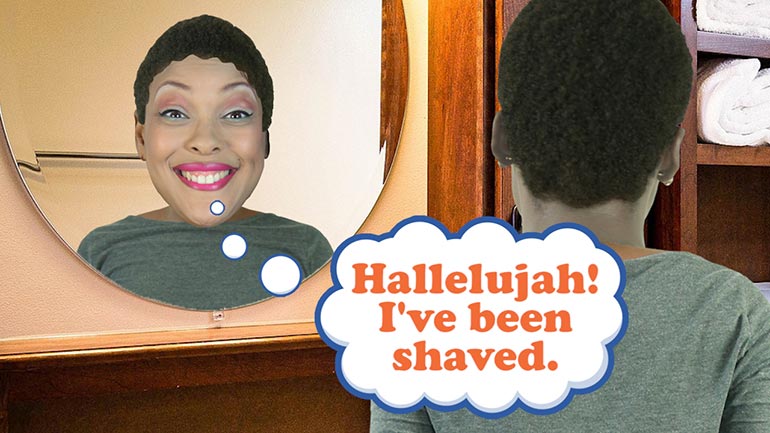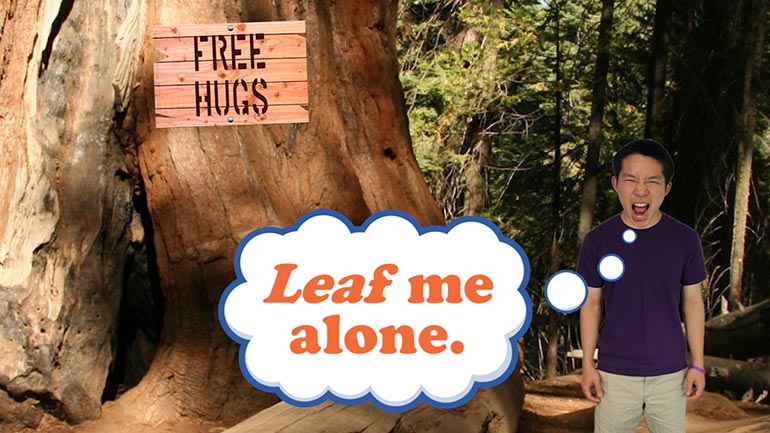ShmoopTube
Where Monty Python meets your 10th grade teacher.
Search Thousands of Shmoop Videos
Science 4: Why is the Sky Blue? 5 Views
Share It!
Description:
It turns out it's not just a sarcastic question to shoot back at people when you don't know the answer to something. Check out this video to find out why the sky actually is blue while we go back to the drawing board.
Transcript
- 00:03
[Dino and Coop singing]
- 00:13
We all know that the sky is blue. [Girl holding a sign that says blue]
- 00:15
And if you didn't know that, then…how.
- 00:17
Like, how.
- 00:18
Are you even a human…? [Guy holding a sign that says red face falls off to reveal a metal body]
Full Transcript
- 00:20
Anyway.
- 00:21
But what if we asked: "Why is the sky blue?"
- 00:23
Is there a deeper reason behind it?
- 00:25
Is blue more poetic than, say…highlighter yellow? [The sky is colored yellow with a highlighter]
- 00:28
Luckily, we won't need to spend five years getting a PhD in philosophy to figure out [People graduating]
- 00:33
which color is the most poetic.
- 00:35
It all comes down to different frequencies. [Girl is pulled off the stage with a vaudeville hook]
- 00:37
As you might remember, light is a form of energy called electromagnetic radiation. [Coop pointing at a blackboard]
- 00:42
And depending on the frequency of this electromagnetic radiation, we get different kinds of light. [Dino pointing at a blackboard]
- 00:47
So waves with a slightly higher frequency than visible light are ultraviolet radiation… [UV radiation hitting guy holding a surf board on the beach]
- 00:51
…and those with a slightly lower frequency are infrared radiation. [Picture from an infrared camera]
- 00:55
In fact, if the frequency gets lower than infrared radiation, you can even get radio [A radio tower]
- 01:01
waves.
- 01:02
So different frequencies give us very different kinds of light. [Someone tuning a radio]
- 01:05
And no, pouring green paint all over your radio won't help you pick up any Top 40 stations. [Guy throws green paint onto the radio]
- 01:10
Sorry about that.
- 01:11
The idea that a different frequency produces a different kind of light also applies when
- 01:15
we look at the range of visible light. [The electromagnetic spectrum]
- 01:17
You might remember that visible light has frequencies that range between 400 and 800
- 01:22
tetrahertz.
- 01:23
We can break that big 400 tetrahertz range down into smaller chunks that give us all
- 01:27
of the colors of the rainbow: red between about 400 and 480 THz… [All the different color wavelengths are shown]
- 01:32
…orange between about 480 and 510 THz…
- 01:36
…yellow between about 510 and 525 THz…
- 01:39
…green between about 525 and 610 THz…
- 01:43
…blue between about 610 and 670 THz, and violet between about 670 and 800 THz.
- 01:49
Okay, so not all the colors of the rainbow, we left out indigo. [A rainbow appears]
- 01:53
So sue us.
- 01:54
These different wavelengths have different effects on our eyes. [Wavelengths of light entering an eye]
- 01:57
When light travels into a human eye, it hits the retina, which translates the light into
- 02:01
a bunch of signals that the brain can understand. [Coop pointing at a blackboard]
- 02:04
Different parts of the retina detect the frequency of the light…
- 02:07
…and then the retina passes that info along to the optic nerve, so that it can fill the
- 02:11
brain in on what color the eyes see. [Wavelength signals arrive at the brain]
- 02:14
This same process works for any color, whether you're looking at a blue sky with its colors
- 02:18
in the 610 to 670 THz range…
- 02:21
…or a yellow sky, with its colors between 510 and 525 THz.
- 02:26
But if you're seeing a yellow sky, you might want to find an underground bunker and hide…sounds [A fire breathing dragon appears]
- 02:30
like the apocalypse is near. [Guy running away as he sees the dragon in the window]
Up Next
Sticks and stones, right? Well...only sometimes. It's a good idea to make sure your words aren't going to hurt others. Let's look at some ways to d...
Related Videos
Learn to debate like a champ. It's way better than debating like a chimp. That just takes mudslinging to a whole new level.
Today we'll learn about biographies and autobiographies. And no, the second one has nothing to do with the lives of cars.
In this lesson we'll subject you to some verbs and predicates. Each one is a necessary part of a complete breakfas—er...sentence.
Choosing words carefully is important. You may end up vexing the assemblage of citizens you're conversing with...or you might even just plain bore...




